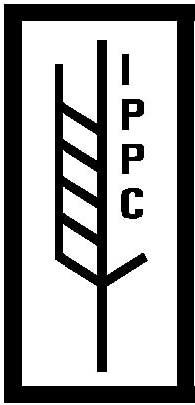ISPM 15 FAQs
ISPM 15 is an international standard designed to prevent the spread of invasive pests through wood packaging materials like pallets, crates, and dunnage. It requires wood to be treated and marked to ensure compliance.
ISPM 15 compliance is mandatory for exporting goods using wood packaging materials to most countries. Without compliance, shipments may face delays, fines, or rejections at customs.
ISPM 15 applies to all solid wood packaging materials, including pallets, crates, and dunnage. However, processed wood products like plywood, oriented strand board (OSB), and particle board are exempt.
The two main methods are:
Heat Treatment (HT): Wood is heated to a core temperature of 56°C for at least 30 minutes.
Methyl Bromide Fumigation (MB): A chemical treatment used in some regions but less common due to environmental concerns.
At Wisconsin Lumber & Pallet, we offer heat-treated wood packaging for compliance.
An ISPM 15 compliant stamp includes:
The IPPC logo (a symbol of compliance).
The country code (e.g., “US” for the United States).
The treatment code, such as HT for heat-treated wood.
A unique identifier for the producer or treatment facility.
This marking must be legible, permanent, and should be placed on at least two opposite sides of the wood packaging material.
Yes, the following materials are exempt:
Processed wood products like plywood, OSB, and particle board are exempt, but entire package must be constructed of exempt materials.
Non-wood materials like plastic or metal pallets are exempt from ISPM 15.
Wood packaging used for domestic-only shipments within the same country do not need to follow ISPM 15 standards, but if a customer might reuse a package for export, they might require their supplier to supply ISPM 15 compliant packaging.
Look for the official ISPM 15 (IPPC) stamp on the wood packaging. This stamp confirms the wood has been properly treated and marked in accordance with international standards.
Yes, if the wood packaging material is altered, repaired, or reassembled, it must be re-treated and re-marked to maintain compliance.
Non-compliant shipments can be delayed, rejected, held with fines, fumigated, or destroyed at the destination country’s border. This can result in significant financial losses and shipping delays.
Heat Treatment (HT): Involves heating wood to a specific temperature to kill pests and pathogens. It is eco-friendly and widely accepted.
Fumigation (MB): Involves treating wood with methyl bromide gas to eliminate pests. It is less commonly used and has environmental restrictions in many regions.
Yes, ISPM 15 regulations only apply to international shipments. Domestic shipments within the same country are not subject to these requirements.
Debarking is a requirement under ISPM 15. It ensures no loose or large pieces of bark remain on the wood, as these can harbor or be re-infested with pests. The standard allows small pieces of bark that meet specific size criteria. Please reach out if you have any questions or concerns.
If your business ships products internationally using wood packaging materials, ISPM 15 compliance is required. Wisconsin Lumber & Pallet can help ensure your shipments meet these standards.
Yes and no. Canada and the United States are both ISPM 15 participating countries, but have an exemption on WPM manufactured from wood originating in the continental United States or Canada. Technically, either party could start enforcing ISPM 15 at any time, so we generally recommend treatment to be safe. However, to obtain the exemption, the import documentation must simply state: “The wood packaging material originated in the Continental US“
Yes and no. ISPM 15 Compliant mark is not required when shipping FROM the continental United States to these places, but it is required when shipping from other countries TO these places.
General ISPM 15 Information
In general, ISPM 15 prevents the spread of pests internationally by heat treating or fumigating wood packaging material before use.
Shipping internationally with wood packaging materials can be complex due to strict ISPM 15 regulations. At Wisconsin Lumber & Pallet, we understand the importance of compliance and are here to help. Explore answers to frequently asked questions about ISPM 15 here and ensure your shipments are compliant, cost-effective, and hassle-free.

This is the IPPC logo that you will find within the complete ISPM 15 mark on all compliant wood packaging.
This logo is not enough to certify wood or wood packaging for international transit. This is simply the logo for the IPPC.
For full marking details, you must reference the ISPM 15 found here on the IPPC website: https://www.ippc.int/en/publications/640/
ISPM 15 Links and Documents
If you’re looking to become an expert yourself, feel free to download the official ISPM 15 “Regulation of wood packaging material in international trade” here:
That document has all the answers about wood packaging materials, but if you don’t want to read it, you can simply give us a call. We’re happy to help.
Beyond the ISPM 15, there are a number of other relevant ISPMs to support the implementation/maintenance of ISPM 15.
- ISPM 7 Phytosanitary certification system
- ISPM 23 Guidelines for inspection
- ISPM 20 Guidelines for a phytosanitary import regulatory system
- ISPM 45 Requirements for NPPOs if authorizing entities to perform phytosanitary actions
- ISPM 47 Audit in the phytosanitary context
- ISPM 13 Guidelines for the notification of noncompliance and emergency action
Those documents and more can be found here: https://www.ippc.int/en/centre-of-excellence/phytosanitary-system/ispm-15-implementation/
What Countries Participate in ISPM 15?
Many countries around the world adhere to the ISPM 15 standard as published by the IPPC. A list is provided here, and is accurate as of February 12, 2025.
- Argentina
- Australia
- Austria
- Belgium
- Bermuda
- Bolivia
- Brazil
- Bulgaria
- Canada
- Chile
- Colombia
- Costa Rica
- Croatia
- Cuba
- Cyprus
- Czech Republic
- Denmark
- Dominican Republic
- Ecuador
- Egypt
- Estonia
- Finland
- France
- Germany
- Greece
- Guatemala
- Hungary
- India
- Indonesia
- Ireland
- Israel
- Italy
- Jamaica
- Japan
- Jordan
- Kenya
- Korea
- Latvia
- Lebanon
- Lithuania
- Luxembourg
- Malaysia
- Malta
- Mexico
- Netherlands
- New Zealand
- Nicaragua
- Nigeria
- Norway
- Oman
- Paraguay
- Peru
- Philippines
- Poland
- Portugal
- Romania
- Seychelles
- Slovakia
- Slovenia
- South Africa
- Spain
- Sri Lanka
- Sweden
- Syria
- Taiwan
- Trinidad and Tobago
- Turkey
- Ukraine
- United Kingdom
- Venezuela
- Vietnam
If the country you’re shipping to is on the list, we can help answer your questions to make sure your shipment is compliant. If the country you’re shipping to isn’t on this list, you might also want to check this frequently update list here, or do a google search about that country’s ISPM 15 status directly:
https://www.aphis.usda.gov/plant-exports/wood-packaging-material/countries-requiring-ispm15
Contact Us for ISPM 15-Compliant Packaging
At Wisconsin Lumber & Pallet, we provide heat-treated, fully compliant wood packaging solutions. We can answer any of your questions or concerns about ISPM 15 Compliant Export Packaging. It’s what we do.
Contact us today to discuss your needs or request a free quote.
